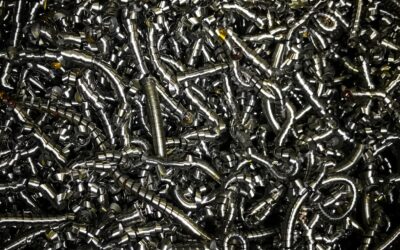The European Hydrogen Bank
A recipe for competitive distortionLast Thursday, the European Commission published its Communication on the European Hydrogen Bank set to accompany the Net-Zero Industry Act, the legislative proposal for which was published on the same day.
The Bank will be an instrument aimed to domestically produce 10 Mt of renewable hydrogen by 2030 and import the same amount.
When used in support of domestic production, the Commission aims to use the auction mechanisms it is planning to develop for the Innovation Fund and extend their use to facilitate the allocation of State aid by Member States in the form of “Auctions-as-a-service”.
The Innovation Fund will provide the Bank’s initial funding, although InvestEU and the Structural Funds are also mentioned. In Autumn 2023, the first auction will be taking place with €800mio. channelled from the Innovation Fund with details on the procedures to be announced in June.
Cumulative support
According to the Commission, the support will not be cumulated with State aid.
Avoiding the cumulation of aid is key to ensuring that competitive bidding is meaningful, as the cumulation of aid would incentivise a subsidy race by Member States at the expense of taxpayers and project competitiveness. The intention is therefore commendable, however, it may not reflect the exact truth.
The cumulation of aid in hydrogen production is indeed likely to happen at many levels, from subsidised electricity to free emission allowances received by the owners of electrolysers under the EU ETS, through state aid compensation for indirect carbon cost and the recently announced Net Zero Industrial Act which aims at supporting stakeholders involved in the supply chain of hydrogen.
In a 2021 report, Sandbag demonstrated that renewable hydrogen would already be more competitive than “grey” hydrogen (made from steam methane reforming) if both were under the same free emission regime, which they will be from next year.
A meaningful competitive bidding process should factor in all of those forms of aid, which the proposed plan is unlikely to do. By allowing multiple subsidies to support hydrogen, the Hydrogen Bank makes other low-carbon activities comparatively less competitive. For example, in steelmaking, the use of hydrogen direct reduced iron (DRI) could be preferred to secondary steel, even though Europe exports over 20Mt of steel scrap every year which is collected but not processed. Even though the two inputs (DRI and scrap) can be combined, spending subsidies on hydrogen is likely to drive up its production and consumption, whereas a large-scale switch to low-carbon steel should only require a relatively small amount.
Sandbag’s opinion about the European Hydrogen Bank:
Adrien Assous, Head of Sandbag, said: ‘The lack of incentives around circularity is concerning. By making hydrogen cheaper to produce and use, the Hydrogen Bank risks distorting competition with circular activities which are receiving little or no support. Aid should firstly go to sectors that are not already receiving free emission allowances.’
Subsidies to hydrogen also create distortions compared to reuse practices and direct recycling (in the case of steel, involving rolling without furnaces). But above all, it may promote the use of hydrogen in areas where alternatives are more affordable and less resource-intensive. The Commission claims that the scheme should cover the “green premium”, the extra costs associated with opting for renewable hydrogen “over fossil fuels” but without specifying what that alternative scenario is or which sector this would apply to. In some sectors, such as heating, where heat pumps are low-carbon alternatives to natural gas boilers, the Hydrogen Bank might make the burning of hydrogen more competitive instead, leading to the wasting of electricity and taxpayers’ money.
Aid to hydrogen production is counter-productive by definition, as the gas is mostly an intermediate product for the provision of other, useful services such as transport, fertilisers, or steel, where low-carbon solutions other than hydrogen exist as well. To foster competition, aid should therefore be given uniformly across competing solutions, in particular to activities not already receiving free emission permits under the EU ETS.
Electric but not renewable
The Commission’s communication pledges to support renewable hydrogen without explaining what this term covers. Producing hydrogen from low-carbon electricity that would otherwise not be used makes sense, but, as explained in a recent report, if the electricity used creates the need to power up fossil-fuel power stations, the climate impact is equivalent to running electrolysers on 100% thermal power and the hydrogen thus produced is far from being “green”.
A standard for Renewable Fuel from Non-Biological Origin (RFNBO) is currently under discussion within EU institutions, but the version proposed by the Commission fell short of guaranteeing any climate benefit whatsoever and some MEPs of the ITRE committee (responsible for the file) still found it too stringent. It is therefore likely that the so-called “renewable hydrogen” promoted by the Hydrogen Bank will in fact cause the generation of fossil-based electricity.
The wrong financial instrument
The Hydrogen Bank’s alleged objective is to de-risk investments by the private sector. It professes to achieve that goal by granting hydrogen producers a fixed premium per kg of hydrogen produced for a maximum of 10 years of operation. Payments would be based on the delivery of certified and verified volumes of renewable hydrogen.
However, a fixed premium cannot de-risk a project that will receive variable revenues from the sale of emission allowances under the EU ETS. The proposed scheme is therefore likely going to increase the overall remuneration of projects producing hydrogen, while keeping the variability of their revenues (the actual risk) constant. To neutralise risk, a carbon contract for difference (CfD), whereby regular payment varies to balance out the direction of the carbon price, would have been more appropriate.
A missed opportunity
The type of instrument set up by the Hydrogen Bank could have been a good opportunity to showcase a support tool for activities not covered by the EU ETS or receiving fewer free emission allowances than covered activities they compete with. However, the proposal instead leans blindly into the hydrogen hype by distorting competition for other low-carbon, less resource-intensive alternatives, such as recycling, in favour of solutions which may ultimately lead to an increased reliance on fossil fuels and a waste of energy and taxpayers’ money.
According to the Commission, the Hydrogen Bank should be up and running by the end of the year.



